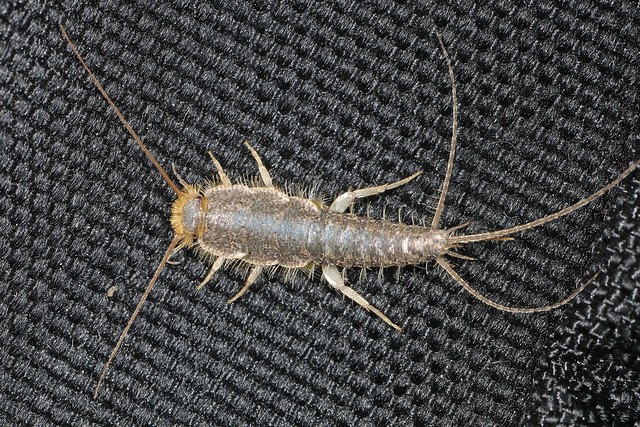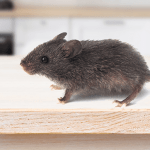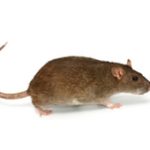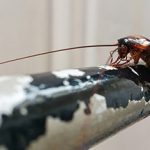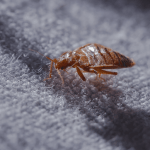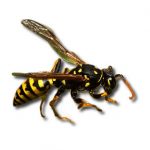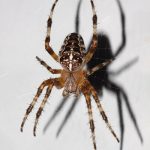Silverfish UK
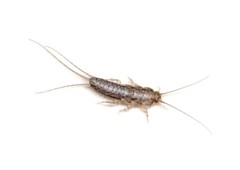 When considering ancient pests, many think of cockroaches. However, silverfish predate them, having existed for over 400 million years. These wingless, nocturnal insects are common in UK households, thriving in damp environments and feeding on starchy materials like paper and glue.
When considering ancient pests, many think of cockroaches. However, silverfish predate them, having existed for over 400 million years. These wingless, nocturnal insects are common in UK households, thriving in damp environments and feeding on starchy materials like paper and glue.
They do not carry any known disease from pre-historic times. Yet they have acquired a fine taste for old books, leather clothing, quality wallpapers and other everyday objects we don’t want to see consumed by an out-of-control insect population. We discuss the silverfish, its appearance, habits, diet and its classification as a vermin.
What are silverfish?
Often confused with small centipedes or other household bugs, silverfish (Lepisma saccharina) are wingless insects with a distinctive, primitive look. These nocturnal pests have slender, tear-shaped bodies that can grow up to 12–30mm in length. Their name comes from their shiny, silver-blue scales and the fish-like, wriggling motion they make when they move – hence the name silverfish.
Unlike many insects, silverfish do not undergo metamorphosis, meaning their appearance changes very little as they grow. Silverfish nymphs look like smaller, paler versions of adults. They are typically soft-bodied and creamy white in colour when newly hatched, gradually developing their trademark silver scales as they mature.
To tell a young silverfish apart from a mature one, observe the length and fullness of their antennae and the depth of their body colouring. Even though both young and adult silverfish are secretive and fast-moving, these visual clues can help distinguish between life stages during a silverfish infestation.”
Read more: Bugs that look like silverfish.
Evolutionary history
Silverfish are among the oldest species of animals on Planet Earth. Alongside bristletails and firebrats, they belong to a primitive group of wingless insects known as the Apterygota subclass. Palaeontologists believe silverfish were among the first insects to colonise land, with fossil evidence found in Tertiary and Cretaceous amber deposits, some over 140 million years old. They are closely related to Rhyniognatha hirsti, the earliest known insect from the Devonian period.
Their unchanged body structure over hundreds of millions of years highlights their evolutionary success and adaptability, key reasons why silverfish infest homes today despite their prehistoric origins.
Silverfish feeding habits & behaviour
Silverfish are moisture-loving insects with a strong preference for carbohydrate-rich materials. Their diet primarily consists of polysaccharides – a type of complex sugar found in everyday household items. Silverfish commonly feed on:
- Books and paper (especially those with glue bindings)
- Leather clothing and upholstery
- Coffee and sugar
- Cosmetics and shampoos
- Photographs
- Starches in cereals and pantry items
- Cardboard, wallpaper, and adhesives
These paper-eating insects are especially drawn to damp environments, which makes places like kitchens, bathrooms, attics, garages, and basements ideal habitats. They often hide in cracks, under floorboards, or inside cardboard boxes – emerging at night to feed.
They also move in a rapid, quick manner, making them hard for homeowners to spot. Silverfish reproduction is slow – the female can lay no more than 60 eggs at once, and on average lays 100 eggs per lifetime. What they lack in reproductive efficiency, they make up in longevity. Silverfish live up to 5 years and can survive for several weeks without water, and for a whole year without food. They also cannibalise fallen or injured insects.
Did you know? Silverfish can survive in both humid and dry conditions if food sources are abundant, making silverfish infestations in new homes just as likely as in old ones.
Are silverfish harmful to humans?
Silverfish are not dangerous to humans, even though they may initially seem creepy or unsettling. These insects do not bite, do not sting, and do not transmit any known diseases. In fact, silverfish cannot pierce human skin – their small, weak mandibles are only suited to feeding on soft materials like paper, glue, or fabric starch.
Are silverfish venomous?
No. Silverfish are not venomous, toxic, or harmful through direct contact. Unlike some other common household pests, they don’t pose a threat through bites or stings, and there’s no medical evidence linking silverfish to any serious health conditions.
Can silverfish affect your health indirectly?
Yes, silverfish infestations can indirectly impact your well-being. Here’s how:
- Allergic reactions – their shed skin and droppings can contribute to indoor allergens, potentially triggering asthma or allergy symptoms in sensitive individuals.
- Attracting predators – silverfish serve as a food source for more dangerous pests, including centipedes, spiders, and cockroaches, some of which can carry bacteria and viruses harmful to humans.
- Contamination risk – in rare cases, silverfish may crawl over food sources, especially if stored improperly, contributing to unhygienic conditions in kitchens or pantries.
What can silverfish destroy in your home?
Although silverfish don’t bite or spread disease, they can still be a serious nuisance in your home. These paper-eating pests are known for causing gradual but costly damage to a wide range of organic materials, especially in damp, cluttered, or poorly ventilated areas.
Silverfish are attracted to items high in starches, sugars, or adhesives. Homeowners across the UK report silverfish damage to:
- Books, newspapers, and photographs
- Important documents and stored paperwork
- Leather clothing, upholstery, and accessories
- Cardboard boxes and wallpaper
- Wallpaper glue and binding adhesives
- Family heirlooms and memorabilia
In severe infestations, silverfish can strip entire sections of wallpaper, leaving behind peeling, damaged walls that appear worn or scraped.
Silverfish in food and packaging
While they don’t eat solid food the way pantry pests do, silverfish can still infiltrate:
- Cereal boxes
- Sugar containers
- Dry goods stored in paper or cardboard packaging
They’re especially skilled at squeezing into sealed packages, particularly those with minor tears or flaps, which can lead to contamination of food products.
If you spot signs of damage on cardboard food boxes or discover tiny silver bugs in your pantry, it’s time to inspect for a silverfish infestation.
What attracts silverfish the most?
Silverfish infestations can occur in a variety of environments – not just damp, neglected basements. These resilient insects are highly adaptable and capable of surviving in both humid and dry indoor conditions, as long as food sources are readily available.
Key conditions that attract silverfish are:
1. High humidity
Silverfish are moisture pests that prefer environments with relative humidity of 75–90% and warm temperatures (21–30°C or 70–86°F). These conditions are commonly found in bathrooms, laundry rooms, basements and kitchens.
2. Abundant food sources
Silverfish feed on polysaccharides – complex sugars found in:
- Cereal and flour
- Paper, glue, and cardboard
- Book bindings and wallpaper paste
- Leather, cotton, and silk
- Dead insects and plant matter
3. Cluttered or untouched areas
Storage boxes, old newspapers, seldom-used cupboards, and cluttered attics offer dark, undisturbed hiding places, making them ideal for silverfish to reproduce and remain hidden.
4. Cracks and entry points
Tiny gaps in walls, baseboards, and plumbing connections allow silverfish to sneak into your home and remain undetected for long periods.
Even modern, well-maintained homes are not immune. A silverfish infestation can develop in clean spaces if the humidity is high or if organic materials are left exposed.
Read more: What attracts silverfish to your home?
How to detect a silverfish infestation
Silverfish are elusive pests, and spotting them can be challenging due to their nocturnal nature and swift movements. However, early detection is key to preventing damage to your home and belongings.
Signs of silverfish in UK Homes
1. Actual sightings
The most reliable way to confirm an infestation is to see a live silverfish. These insects typically emerge at night and scurry away when exposed to light. They are often found:
- In bathtubs, sinks, or ceramic basins, where they get trapped after seeking moisture
- On basement floors, behind wallpaper, or inside bookshelves
2. Damage to household items
Silverfish feed by scraping away thin layers from surfaces. Signs include:
- Sandpaper-like damage to books, documents, cardboard, and wallpaper
- Tiny holes or worn patches on clothing, upholstery, or paper products
- Yellow stains or smudge marks on infested materials
3. Droppings and shed skins
- Silverfish excrete tiny black droppings, often mistaken for pepper flakes or dust
- They also shed their skin during growth, leaving behind transparent exoskeletons near hiding spots
- These signs may require a trained pest control professional to positively identify
4. Unusual activity in humid areas
You might notice increased insect activity around:
- Storage boxes
- Closets
- Laundry rooms
- Behind baseboards or under sinks
Silverfish control – natural methods to repel and manage infestations
If you’re looking to control a silverfish problem naturally, there are several safe and effective DIY silverfish remedies you can try. These methods may not eliminate an infestation entirely but can help repel silverfish and reduce their presence in your home.
Read more: How to get rid of silverfish?
Natural repellents for silverfish
Spices with strong aromas
Silverfish are highly sensitive to certain scents. Try placing the following spices in sachets or shallow containers near hiding spots:
- Bay leaves
- Whole cloves
- Sage
Best placed under furniture, behind appliances, or in pantry cupboards where silverfish activity is common.
Diatomaceous earth
Diatomaceous earth, a naturally occurring powder derived from fossilised algae, is safe for humans and pets but deadly to insects like silverfish. It works by dehydrating them upon contact and is most effective when lightly dusted into cracks, along baseboards, behind appliances, and in other common hiding spots throughout the home.
Cucumbers
Cucumber slices offer an easy and affordable natural remedy for silverfish, as these pests are repelled by the scent of fresh cucumber. Simply place slices in the corners of closets, drawers, or dark cupboards, and replace them regularly to maintain their effectiveness—making this method ideal for short-term use or preventing silverfish activity in food storage areas.
Citrus essential oils (Lemon, Orange, Grapefruit)
Citrus essential oils naturally repel silverfish thanks to their strong aromatic compounds. To use, mix 10–15 drops of 100% pure citrus oil with water, pour the solution into a spray bottle, and lightly mist affected areas such as baseboards, behind toilets, and inside wardrobes. As a bonus, this method not only deters pests but also leaves your home smelling fresh and clean.”
What to do in case of a silverfish infestation
If you’ve confirmed the presence of silverfish in your home, taking swift action is essential. While there are several natural repellents that may help reduce activity, DIY silverfish control is rarely effective for complete eradication. For moderate to severe infestations, or if silverfish return despite your efforts, it’s best to consult a licensed silverfish exterminator. Professional pest control services offer:
- Targeted application of insecticidal sprays and dusts in silverfish hiding spots
- Access to residual treatments that kill both adults and nymphs over time
- Expertise in identifying entry points and moisture problems that support infestations
A qualified expert can ensure complete eradication of silverfish, preventing further damage to your belongings and reducing the risk of recurring problems.”
Looking for professional silverfish control?
We only aim to provide some useful facts about silverfish and how to identify them easily. Anyway ,we don’t provide any medical advice.




